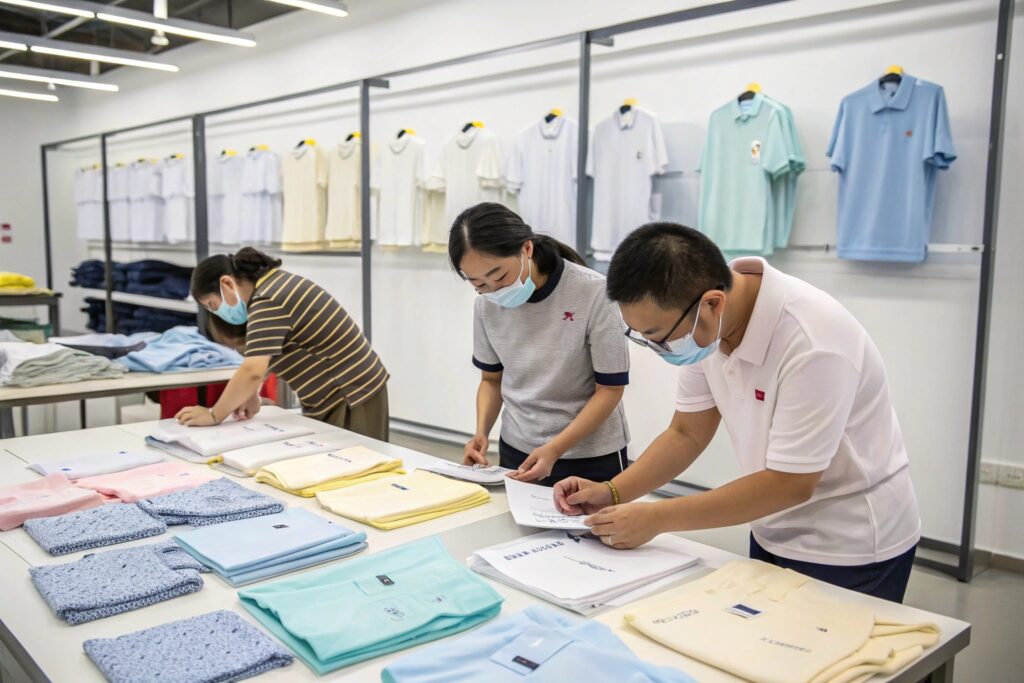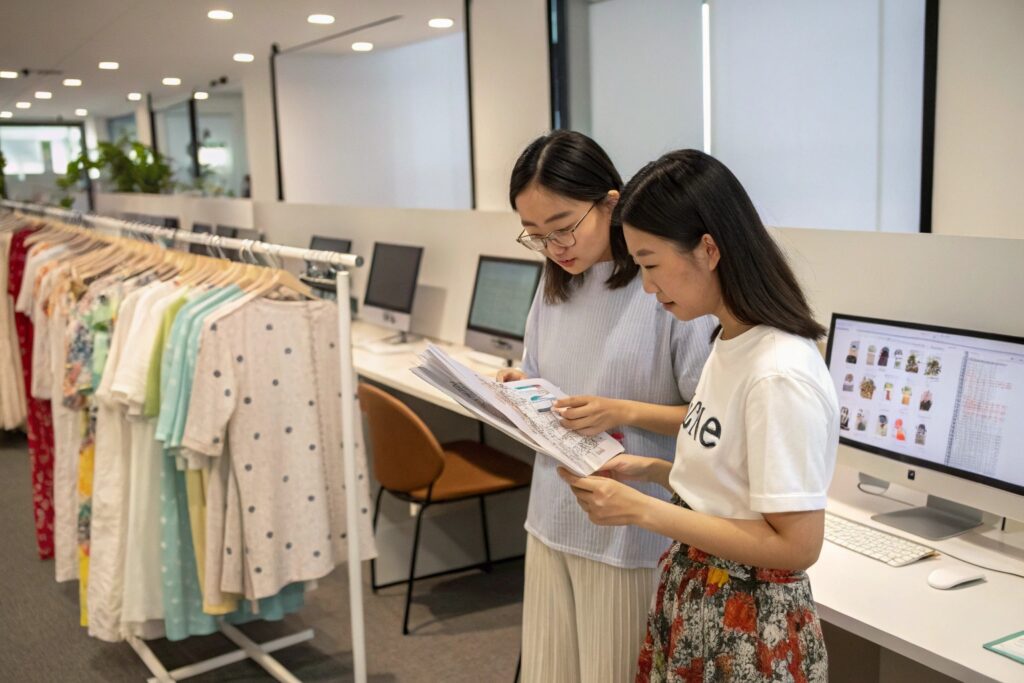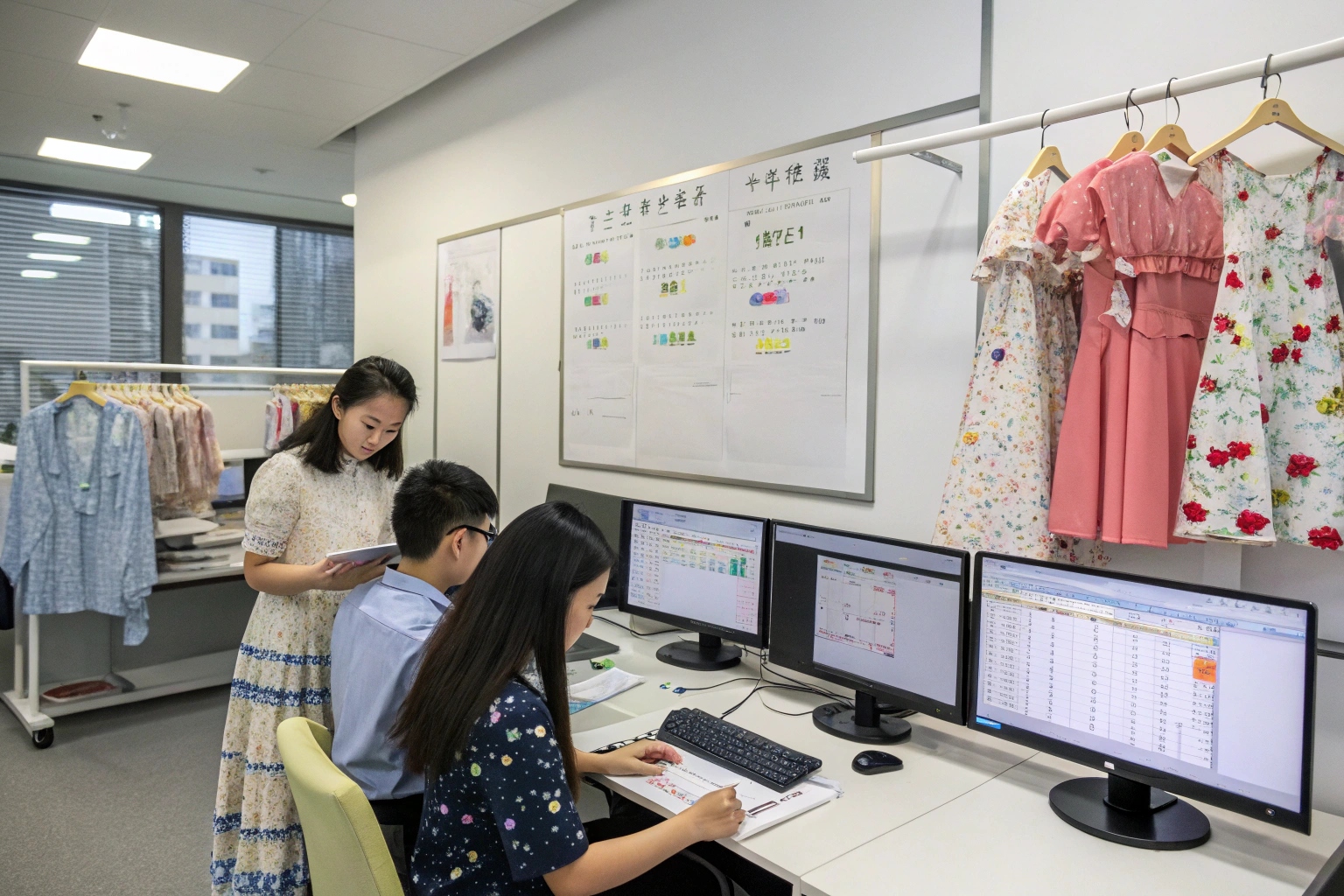Stock that sits is money lost. For modern retail, fast-moving inventory is essential—not optional.
Capsule collections drive faster inventory turnover by focusing on limited runs, trend alignment, and tightly controlled sell-through strategies.
From my work with global kidswear retailers, I’ve seen how capsules boost cash flow, reduce warehousing costs, and energize retail teams—all by getting products in and out quicker.
Faster Sell-Through Rates with Capsule Collections?
Traditional bulk collections often sell at 60%. Capsules can push that number over 90%.
Capsule drops sell faster because they’re designed to hit trends while they’re hot and in quantities that match short-term demand.

How do capsule collections naturally boost sell-through performance in retail environments?
Capsules build urgency. Limited availability triggers faster purchase decisions. When consumers know a product won’t be restocked, they act quicker. Retailers benefit because they don’t have to push products with discounts or wait weeks for results.
One of our clients launched a Halloween-themed kidswear capsule—just 500 pieces total across 4 SKUs. It sold out in 9 days. No markdowns, no overstock. That’s the power of combining seasonality with scarcity.
Sell-through rates also improve because capsules match trend cycles more accurately. Instead of selling an all-season line, you’re selling moment-specific products—like raincoats during a wet spring or cozy fleece sets right before the holidays.
Why does faster sell-through help retailers beyond just revenue?
Speed-to-sell frees up floor space, warehouse space, and cash. The quicker you move inventory, the faster you can invest in your next capsule. That’s especially important for kidswear, where sizing shifts quickly and unsold stock becomes outdated fast.
High turnover also improves retail morale. Store managers love capsules because they create buzz and energy. They’re easier to promote, merchandise, and rotate through displays. And when they’re gone, they’re gone—making room for the next trend.
Minimizing Dead Stock Through Limited Releases?
Capsule collections make stock expiration less risky. That’s a big win in fashion.
By focusing on limited releases, capsules help brands and retailers avoid slow sellers, markdowns, and unsold inventory.

How do capsule collections reduce the chance of accumulating unsellable stock?
Because you produce just enough—not too much. Capsules are built on short production runs. At Fumao, most clients order 300–800 pieces per SKU in a capsule. That size is small enough to test demand and big enough to meet short-term needs.
Also, capsules are planned with sell-out in mind. We build forecasts around event calendars, climate data, and digital trends. When a client drops a Valentine’s Day capsule, it’s gone before February 15.
Here’s the difference in risk exposure:
| Collection Type | Average Sell-Through | Discount Need | Dead Stock Rate |
|---|---|---|---|
| Traditional Bulk | 60–70% | High | 15–20% |
| Capsule | 85–95% | Low | <5% |
Dead stock kills profitability and fills storage. Capsules flip the model—small batch, sell fast, no leftovers.
How does this impact the environment and retail sustainability?
Less overproduction means less textile waste. That’s a growing concern, especially among younger consumers. Kidswear brands using capsule strategies can promote their low-waste model as a competitive advantage.
We’ve had clients include messaging like “Limited drop – zero landfill” in their campaigns. That narrative builds customer trust while reducing the environmental toll of fashion.
From a business perspective, reducing dead stock saves money on storage, handling, and disposal. It also keeps your brand from getting stuck in a discount cycle that devalues your products.
Boosting Retail Margins with Targeted Drops?
Margins suffer when you overbuy. Capsules protect them.
Capsule collections allow retailers to maintain high margins by targeting specific styles, minimizing overstock, and reducing markdown dependency.

How do capsule drops support full-price sales better than traditional collections?
Capsules are short, sharp, and exciting. Customers see them as new—not as part of a store’s back inventory. That perception allows retailers to keep prices high. It’s not clearance—it’s a drop.
We’ve helped clients push margin from 52% to 68% simply by shifting to capsule-only launch calendars. Instead of one 80-piece line per quarter, they release 3 capsules of 8–12 pieces each. Smaller drops mean fewer pricing errors and more sell-out momentum.
Retailers also bundle capsules with limited-time offers. For example, “Buy 2 from the Spring Capsule, get a matching headband free.” These micro-promos create perceived value while keeping core pricing intact.
How can retailers reinvest capsule profit for stronger future performance?
Capsule profits create liquidity. Fast sell-through means faster cash flow. That enables you to place new orders sooner—often within the same season.
We’ve seen retailers use capsule revenue to:
- Launch a new mini-collection in 2–3 weeks
- Reorder best-sellers before a trend cools
- Run pop-up retail events based on real-time demand
Capsule drops build a loop: sell fast, earn fast, reinvest fast. That’s how smaller retailers outpace slower, bulk-based competitors.
Inventory Planning Strategies for High Turnover Capsules?
You need more than good design—you need smart planning behind each drop.
Successful capsule collections rely on real-time sales data, seasonal alignment, and multi-tier inventory planning to maximize turnover.

What planning models work best for capsule inventory?
We recommend the 3-Tier Capsule Planning Model:
- Core SKUs – Safe, high-rotation items (e.g., solid color tees). Moderate quantity.
- Hero Styles – Trend-led, high-impact designs (e.g., graphic sweatshirts). Small quantity.
- Test SKUs – Experimental styles (e.g., unusual prints). Micro batches.
| Tier | Quantity Per SKU | Risk Level | Reorder Option |
|---|---|---|---|
| Core | 500–1000 | Low | Yes |
| Hero | 300–500 | Medium | Yes |
| Test | 150–300 | High | Optional |
This model lets you push variety while managing risk. You can reorder hero styles based on week-one data, and retire test SKUs that underperform—without heavy losses.
We also encourage clients to map capsules to marketing calendars. Align your capsule drop with events—Spring Break, Summer Camp, Fall Sports. That gives structure to your launch schedule and predictability to your sell-through cycle.
How does Fumao Clothing support capsule inventory planning for its buyers?
We offer the following tools and services:
- Weekly Sell-Through Reports for past capsule drops
- MOQ Flexibility for micro or tiered launches
- Quick Reorder Slots for styles that sell out
- Regional Forecasting Data to plan climate-specific drops
Our clients often share sell-through data with us after the drop. We then use that data to optimize their next capsule—style count, batch size, lead time, delivery window.
Planning isn’t just about quantity. It’s about timing, assortment, and your customer’s attention span. Capsules let you stay in control of all three.
Conclusion
Capsule collections are retail’s secret weapon. They help you move fast, earn more, and leave nothing behind. For modern inventory turnover, capsules aren’t just useful—they’re essential.










